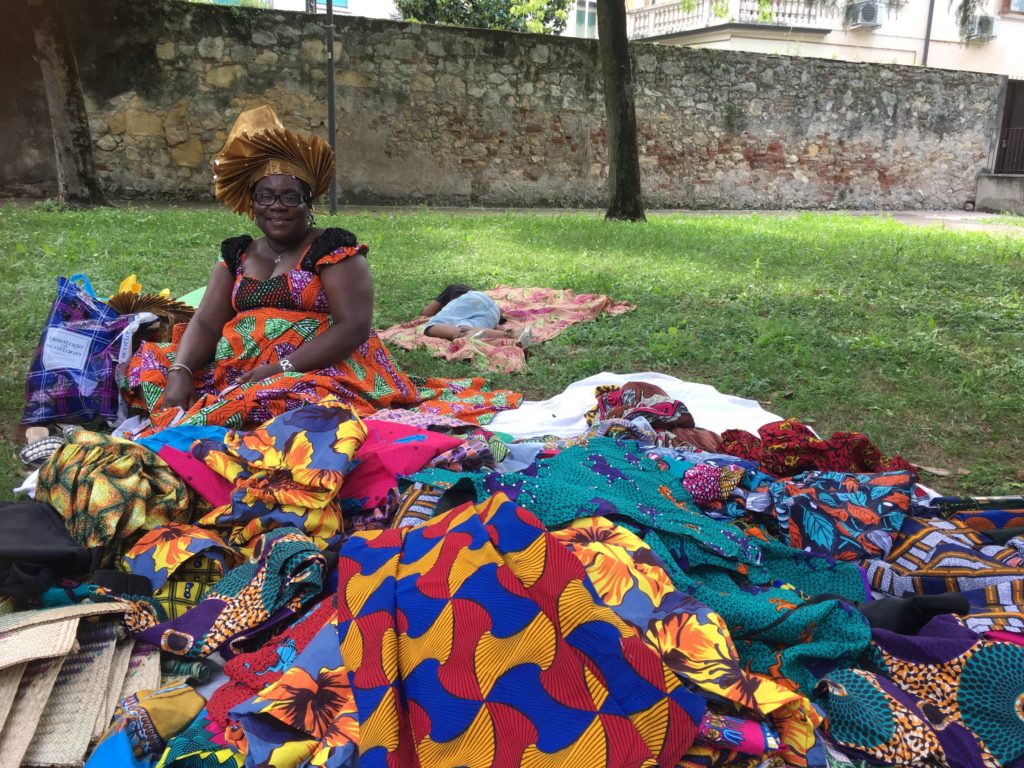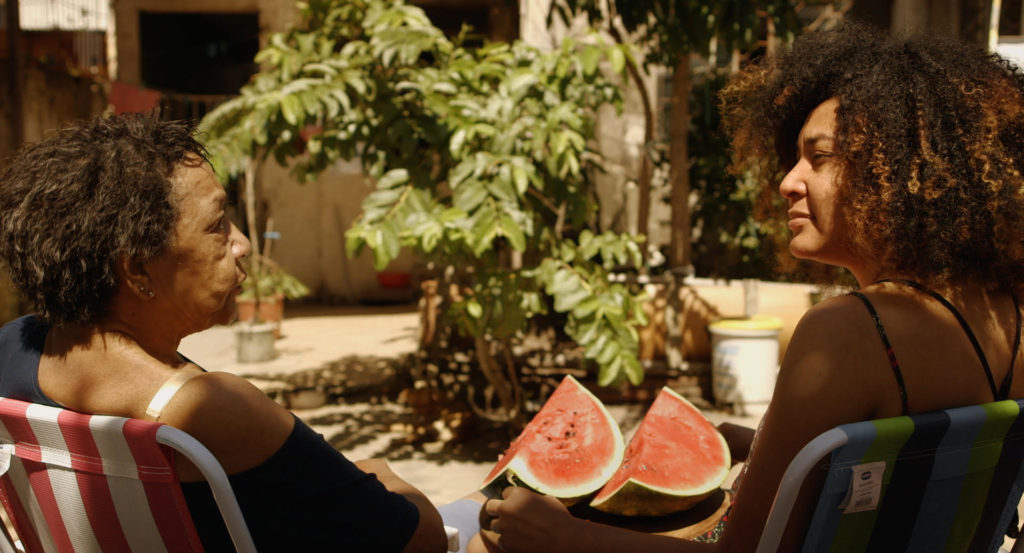In Pakistan, rural women are bearing the brunt of climate change, facing displacement, loss of livelihoods, and limited support. Stories of women from the ground reveal a broader crisis where climate-induced hardships are compounded by societal neglect and exploitation.
Written by Ayesha Mirza
Edited by Nikita Jain
Rubina Husain, 34, a farmer from Chak Islamabad in Pakistan’s Bahawalpur in Punjab province, can no longer call her village a home. The devastating floods of 2022 washed away not only the crops she worked on but also the tenuous stability she had built over the years. Forced to migrate to the southern port city of Karachi in Pakistan, Husain now works as a domestic worker.
“I find myself constantly worried about my mother, who lives by herself and is battling terminal illnesses,” she said while lamenting the lack of support and opportunities for women hailing from rural areas. Even though Husain and many others like her possess essential farming skills, these skills are considered irrelevant in urban cities, where farming is seen as a rustic activity. The lack of formal education amplifies the discrimination they face. Vocational training centres for such women are either nonexistent or inaccessible.
Husain’s story represents a broader crisis that has remained largely invisible: the gendered toll of climate change. While climate disasters are affecting entire communities, their effects are disproportionately borne by rural women across Pakistan.
While climate disasters are affecting entire communities, their effects are disproportionately borne by rural women across Pakistan.
As many as 8.2 million women of reproductive age were affected by the 2022 floods, which primarily struck rural and underdeveloped regions of Pakistan. With nearly 1,460 health facilities and over 30,000 schools destroyed, women’s access to education and healthcare remains severely limited. During heatwaves, rural women face a higher risk of suffocation and heatstroke as they continue working in fields without breaks and cook in poorly ventilated kitchens.
On the other hand, cultural norms, caregiving responsibilities, and systemic neglect compound women’s vulnerabilities, leaving them ill-equipped to rebuild their lives.
Husain believes her situation is worsened by the fact that she is single. With no support, she relies solely on her labour to survive. “For most women in our village, whether they’re 10 years old or 60, farming is the only way to earn a living,” says Husain. Without access to education or vocational training—and with climate disasters on the rise—women like Husain are left wondering what options remain open for them.

The gendered toll of climate change
In Pakistan, rural women are the backbone of the agrarian economy, contributing significantly to farming and livestock management. Yet, they are often excluded from policy conversations.
Climate-induced disasters such as floods, droughts, and heatwaves exacerbate their precarious existence. During emergencies, conservative social norms often prevent women from evacuating without male escorts, forcing them to stay behind in dangerous conditions. Those who survive face the challenge of rebuilding their lives with minimal resources and support.
Relief efforts during the 2022 floods revealed the systemic neglect of women’s needs. According to Marvi Latifi, Federal Secretary of the Women Democratic Front, “Many girls and women lacked access to basic necessities like sanitary pads, forcing them to manage menstrual hygiene in unsafe and unhygienic conditions. The relief camps also became sites of sexual harassment, which added to women’s anxieties and distress.
Female farmers’ loss of livelihood highlights how climate change is perpetuating economic inequalities. Across the country, female farmers lack land ownership and are often relegated to underpaying or unpaid labour.
Female farmers’ loss of livelihood highlights how climate change is perpetuating economic inequalities. Across the country, female farmers lack land ownership and are often relegated to underpaying or unpaid labour.
A 2018 UN Women report revealed that only 19% of female farmers were in paid employment, while 60% worked as unpaid labour on family farms and enterprises. At the time, their unpaid contributions were valued at PKR 683 billion—accounting for 57% of all work done by women and constituting 2.6% of Pakistan’s GDP. Four years later, just months before the floods, the Sindh Commission on the Status of Women, in collaboration with the Potohar Organisation for Development Advocacy and the UN’s Food and Agriculture Organisation, held a consultation reaffirming that female farmers in Pakistan remained unrecognised and uncounted for their contributions to the national economy.
Yet, the government’s post-flood relief initiatives largely overlooked women in rural areas. “Following the floods, many widowed women from rural areas asked us for cash, which they intended to save for difficult times,” Latifi informed MWP.

Displacement and Urban Challenges
Afreen, 28, was forced to move to Karachi in 2024 after heavy rains and subsequent floods damaged her house in Gambat, a town in Pakistan’s Sindh province. She temporarily lived with her relatives and worked as a domestic worker. Afreen struggled to adjust to an unfamiliar urban environment and hoped she could return home, where she would not need to constantly worry about sudden eviction.
Displaced women without familial support face heightened risks, including sexual exploitation, unsafe living and working conditions, and severe mental distress. Pakistan already suffers from a dearth of legal and mental health services for women, and access for rural women is even more limited due to financial and literacy barriers. This lack of support intensifies their struggles as they attempt to navigate the challenges of urban life on their own.
Domestic workers are regularly exploited by domestic staffing agents, who are notorious for confiscating women’s clothes and personal belongings to prevent them from quitting their jobs. These agents also take substantial portions of the workers’ salaries as commissions. Within the households where these women are employed, they are vulnerable to verbal, physical, and sexual abuse.

Intergenerational consequences
For many rural families, the financial strain caused by climate disasters leads to destructive choices. Amna*, a mother of seven from a low-income neighbourhood in Qasimabad, Sindh, married off her 12-year-old daughter Rabia* to 14-year-old Irfan*. They were married during the surge of marriages after the 2022 floods. “With so little to survive on, her marriage meant one less mouth to feed,” according to Amna.
Sindh is the only region in the country where under-18 marriages are restricted by law, but poverty and worsening climate are becoming a driving force in the increase of such marriages. Early marriages disrupt girls’ education and perpetuate cycles of inequality, limiting their opportunities and exposing them to increased health risks. These consequences ripple across generations, compounding the socio-economic toll of climate change.
Women also face heightened risks of domestic violence as frustrations over economic hardship boil over into the home. These conditions make it nearly impossible for women to break out of cycles of poverty and abuse perpetuating long-term gendered inequalities.
Latifi believes that trapped in poverty and illiteracy, child brides struggle to raise their children properly and pass down the same values they were taught. Rabia now has a toddler herself and will likely suffer the same fate as her own mother, who was pregnant with her seventh child at the time of Rabia’s marriage.
The social fabric of flood-affected areas has frayed under the strain of economic collapse. “With men losing their livelihoods, there has been a noticeable increase in violence and abuse against women,” said Latifi.
Women also face heightened risks of domestic violence as frustrations over economic hardship boil over into the home. These conditions make it nearly impossible for women to break out of cycles of poverty and abuse perpetuating long-term gendered inequalities.

Policy failures and grassroots solutions
Despite the growing frequency and intensity of climate disasters, the Pakistani government has failed to adopt gender-inclusive climate policies. Relief and rehabilitation efforts rarely address women’s unique challenges, such as access to reproductive health services or safe housing.
While Pakistan’s urban civil society, activists, and government representatives attend international climate conferences and host local summits, the voices of those most affected—rural women—remain largely ignored. Their struggles are seldom brought to the forefront. “Awareness is important to some extent, but it won’t be productive unless it reaches the people who are actually affected by it,” says Latifi.
The most pressing challenge facing women with burgeoning climate disasters is the persistent risk of being displaced, leaving behind everything they have established over the years. In Sindh, women now grapple with a lack of access to clean water and the prevalence of contaminated supplies, forcing them to relocate. These pressing issues, emblematic of a broader systemic failure, remain unaddressed, leaving rural women to endure the silent, worsening toll of a changing climate.

Ayesha Mirza is a journalist focusing on social justice, climate change, minority rights, and gender issues.



